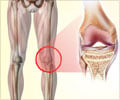Irisin, a hormone released by the muscles during exercises has direct effect on regulatory cells that control bone breakdown and formation.

‘Irisin hormone protects the osteocytes from age-related death and promotes bone remodeling and development.’





Spiegelman and others have proposed that the irisin hormone serves as a link between exercise and its beneficial effects on health, including burning fat, strengthening bones, and protecting against neurodegenerative diseases. Until now, however, researchers hadn't identified a specific molecular receptor for irisin - in effect, a docking structure allowing irisin to bind to cells and tissues. They are now reporting that the irisin receptor is a group of proteins called integrins situated on the surface of osteocytes. Osteocytes are cells that act as the "command and control unit" for bone remodeling - that is, the loss and replenishment of bone that occurs both normally and in pathological states, said Clifford J. Rosen, MD, director of the Center for Clinical and Translational Research at Maine Medical Center Research Institute. Rosen, a co-author of the report, is a leading expert in research on bone development and diseases.
Some research previously found that intermittent injections of irisin increased bone density and strength in mice. Now that Spiegelman's group has shown that irisin targets the osteocyte through a specific receptor, the irisin-bone connection can be explored more mechanistically.
Some experiments reported in the Cell article were designed to explore the potential role of irisin in treating osteoporosis, the thinning and weakening of bone that occurs with age, and in women, with the loss of estrogen production.
Osteocytes - the master bone regulator cells - gradually die off with age, and their loss is believed to be a cause of age-related osteoporosis, the thinning and weakening of bones. In cell culture, the scientists observed that treating osteocytes with irisin protected them from being killed by hydrogen peroxide - a simulation of age-related death. The experiments also showed that treating osteocytes with irisin increased their production of sclerostin, a protein that triggers bone remodeling, and injecting irisin into mice raised their sclerostin levels. Sclerostin actually triggers the breakdown of bone, which might seem harmful rather than helpful. However, Spiegelman explains that "intermittent breakdown of bone seems to be interpreted as a signal to remodel and build bones."
Advertisement
So how could manipulating irisin be used therapeutically? Some form of intermittent irisin treatment might work, Spiegelman suggested. "Proof of this concept exists already," he said, "in that parathyroid hormone - despite being a bone breakdown factor - is used to treat osteoporosis. On the other hand, a neutralizing antibody or some other antagonist of the receptor-irisin binding might mimic the effects shown here by the genetic knock-out".
Advertisement
Source-Eurekalert















